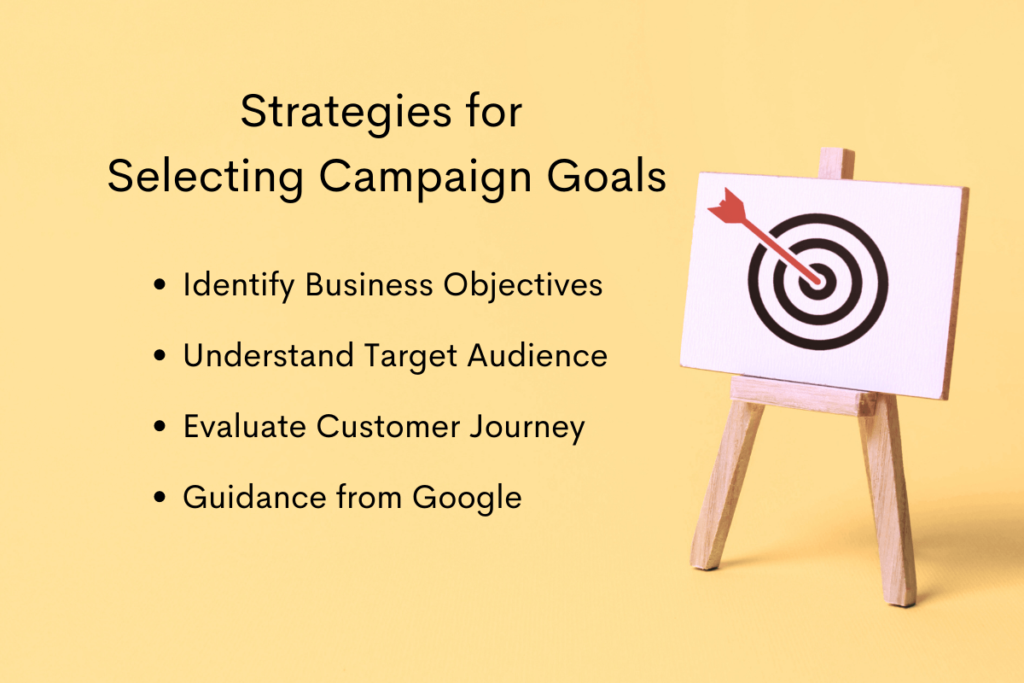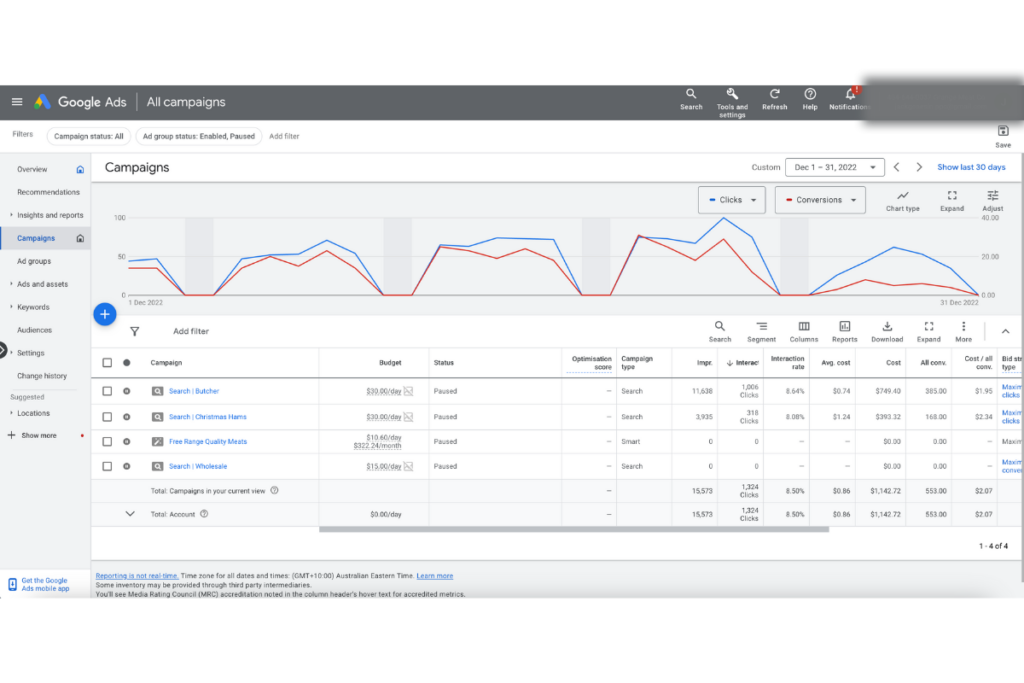In today’s highly-competitive online marketplace, Google Ads play an essential role in ensuring business can effectively and affordably reach their ideal customers. For Australian marketers, however, defining the correct campaign goals in Google Ads can be the make-or-break factor that determines success.
Not only can Google ads campaign goals guide the overall marketing strategy, but they can also provide valuable insight into customer behaviours and preferences. This beginner’s guide will explore the strategic process for choosing the right campaign goals in Google Ads for Australian marketers.
What are the Campaign Goals in Google Ads?
Google Ads offers a variety of campaign types, including Search, Display, Shopping, Video, App, and more. Each of these has different goals associated with them that serve as guideposts for your campaign. These goals are divided into categories such as Sales, Leads, Website traffic, Product and brand consideration, Brand awareness and reach, App promotion, and Local store visits and promotions.
Choosing campaign goals requires an understanding of your business objectives. Are you seeking to increase your brand’s visibility? Drive more traffic to your website? Generate more sales or leads? By clearly defining your business goals, you can better select a campaign goal that aligns with these objectives.
Strategies for Selecting Campaign Goals
Identify Your Business Objectives
The first step in selecting campaign goals in Google Ads is understanding your business objectives. Are you a local business looking to increase foot traffic to your physical store? Or perhaps an eCommerce retailer aiming to boost online sales? Understanding your unique objectives will help you choose a campaign goal that aligns with your business needs.
Understand your Target Audience
To choose the right goal, it’s crucial to understand your target audience. For instance, if your product or service targets younger audiences who are likely to be more active on mobile, goals related to App promotion or Mobile website traffic may be more effective than traditional desktop ads. By contrast, if your target demographic consists primarily of professionals, a campaign geared towards Leads or Sales could produce better results.
Evaluate the Customer Journey
Consider the customer journey from awareness to purchase as part of your Google Ads campaign goal strategies. If your goal is to introduce a new product or service to the market, Brand awareness and reach or Product and brand consideration might be the most suitable goals. If your product or service is well-established, focusing on Sales or Leads could be a better option
Let Google Guide You
Google provides recommendations based on your selection during the campaign creation process. Utilising these insights can help fine-tune your campaign goal selection, ensuring it aligns with your overall business objectives.

Moving Beyond Adwords Campaign Goals
Once you’ve chosen the right campaign goal, you can leverage Google’s powerful advertising tools to drive your campaign’s success. Google’s automated bid strategies can optimise your ads for your chosen goal, whether it’s maximising conversions for a Sales campaign or optimising visibility for a Brand awareness and reach campaign.
As a marketer, understanding the performance metrics associated with each campaign goal is key to evaluating your campaign’s success. Performance metrics in Google Ads provide quantifiable data that can help you evaluate the success of your advertising efforts. These metrics not only gauge the effectiveness of your current campaigns but also provide insight into how to optimise future campaigns for better results. For example:
Impressions: This is the number of times your ad was shown on Google’s network. High impressions indicate that your ad has a broad reach, which is particularly important for campaigns aimed at boosting brand awareness. However, a high number of impressions without corresponding clicks may indicate an issue with ad relevancy or appeal.
Clicks: This metric represents the number of times users have clicked on your ad. Clicks are a basic indication of interest, suggesting that your ad copy or visuals are appealing enough to prompt users to learn more. However, if your click-through rates are low compared to impressions, you may need to improve your ad’s relevancy, messaging, or targeting.
Click-Through Rate (CTR): This is the ratio of users who click on your ad to the number of total users who viewed the ad (impressions). A high CTR often indicates that your ad is relevant and enticing to those who see it. If you notice your CTR is low, it could be a sign that your ad’s messaging isn’t resonating with your target audience, or you’re targeting the wrong audience altogether.
Conversions: Conversions occur when a user completes a desired action after clicking on your ad. This could include making a purchase, filling out a form, signing up for a newsletter, or downloading an app, depending on your campaign goal. A high conversion rate is usually a strong indicator that your ad is not only attracting the right audience but also effectively persuading them to follow through with the desired action.
Cost per Conversion (also known as Cost per Action, or CPA): This is the average amount you’ve paid for each conversion. Keeping this number as low as possible, while still generating conversions, is a common objective in Google Ads. If your CPA is high, you might need to optimise your bidding strategy, improve your landing page, or refine your ad copy to better attract and convince potential customers.
Return on Ad Spend (ROAS): This is the amount of revenue generated for every dollar spent on advertising. It’s an important metric for campaigns where the goal is sales because it directly relates to profitability. If your ROAS is low, it indicates that you’re spending more on your ads than what you’re earning back from them, suggesting that changes need to be made to improve efficiency and profitability.

Aligning Campaign Goals with Digital Marketing Strategies
While Google Ads is a powerful platform in its own right, its real strength comes from being used as part of a larger digital marketing strategy. Whether that involves social media marketing, content marketing, email marketing, or search engine optimisation (SEO), aligning Google Ads campaign goals with these strategies can boost overall marketing effectiveness.
For instance, if you’re running a content marketing campaign to raise awareness about a new product line, pairing it with a Google Ads campaign with a similar goal can help extend your reach. Conversely, if your email marketing campaign is focused on nurturing leads, a Google Ads campaign centred on lead generation can help bring in new prospects to nurture.
Understanding the Synergy Between Campaign Types
Google Ads offers a wide range of campaign types, each with its unique strengths and advantages. By understanding how different campaign types can work together, marketers can create a synergistic effect that amplifies their overall campaign success.
For instance, a Search campaign can be effective for driving immediate conversions, while a Video campaign can be more effective for building brand awareness and consideration. By using these campaign types together, marketers can not only reach users at different stages of their buying journey but also create a more holistic and memorable brand experience.
Your Next Steps in Working with Campaign Goals
Now that you have a better understanding of campaign goals, take steps now and get your Campaign Checklist as well as learn what common mistakes to avoid. See for yourself why CLIQ is Australia’s best Google Ads management firm.




